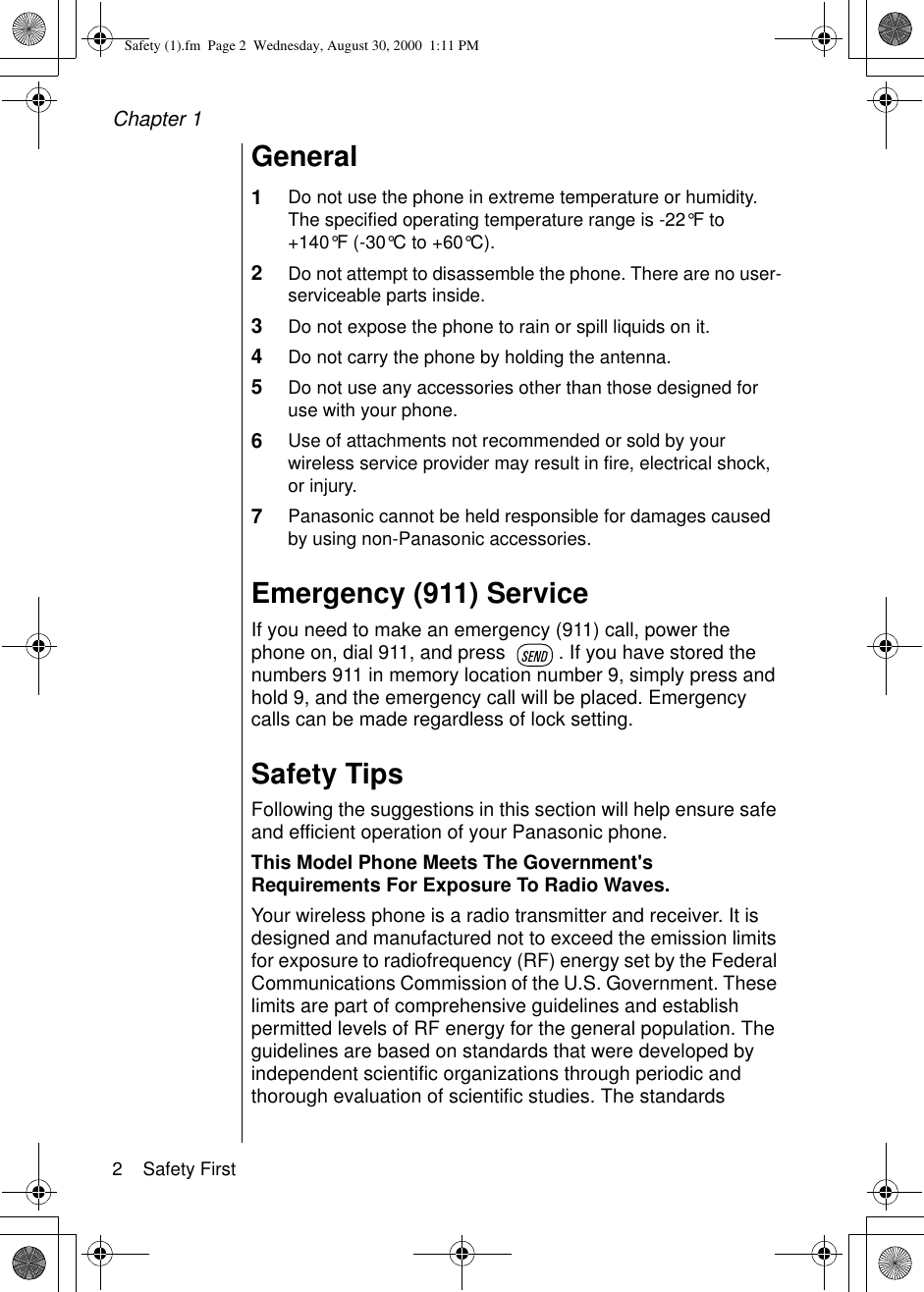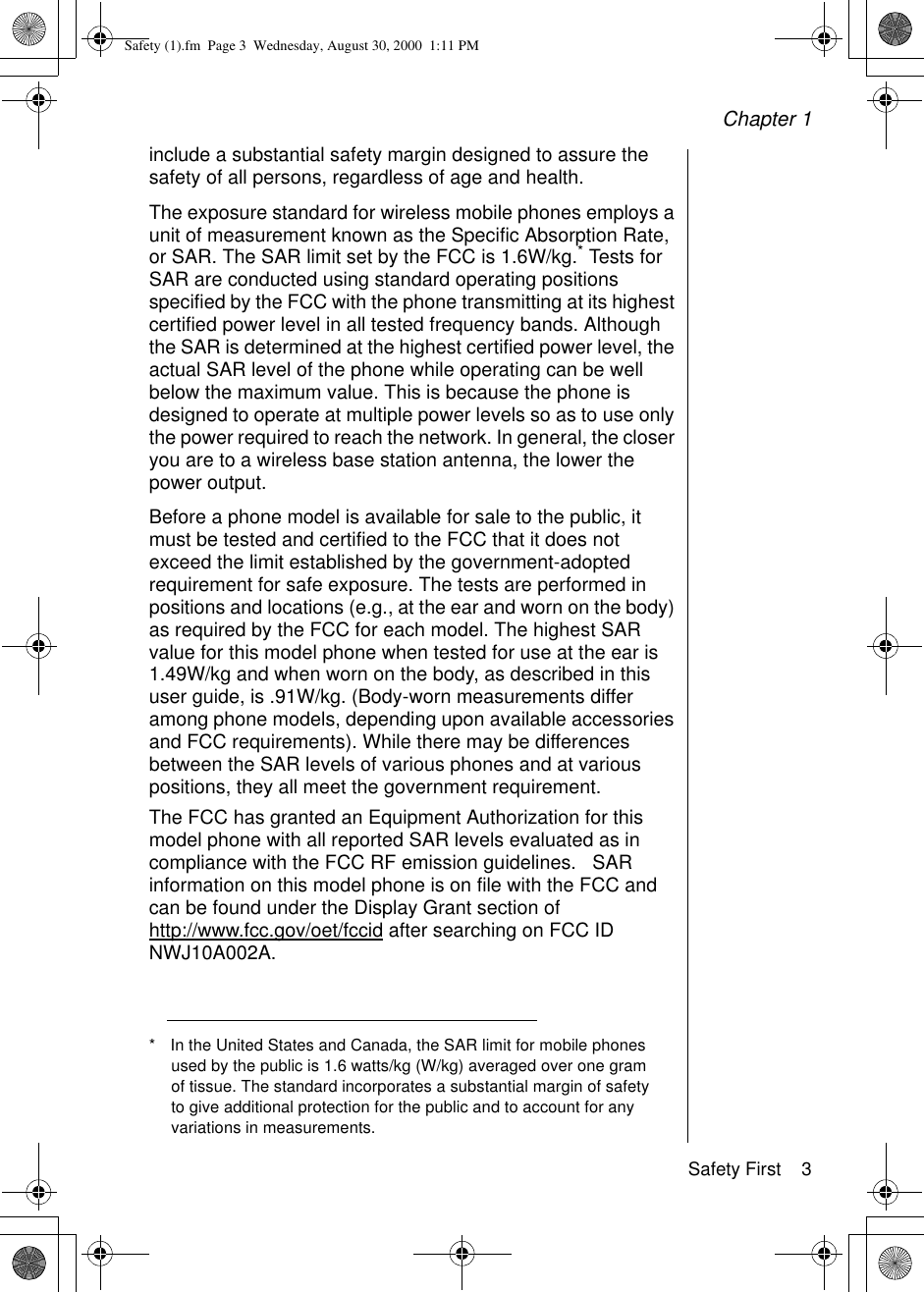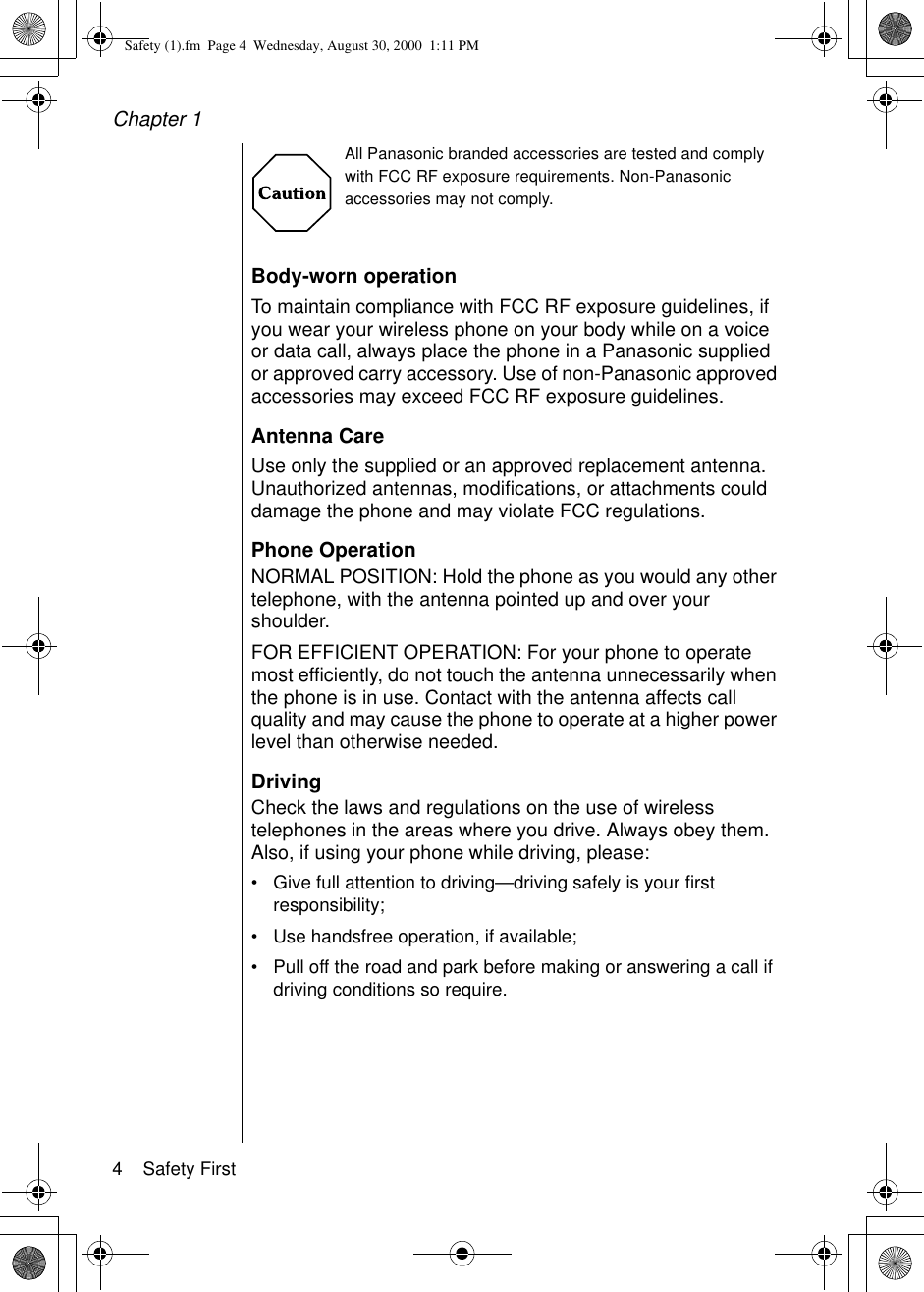Panasonic Mobile Communications Development of USA 10A002A Tri-Mode cellular telephone User Manual Update manual pages with RF exposure info
Panasonic Mobile Communications Development Corpor Tri-Mode cellular telephone Update manual pages with RF exposure info
Update manual pages with RF exposure info


